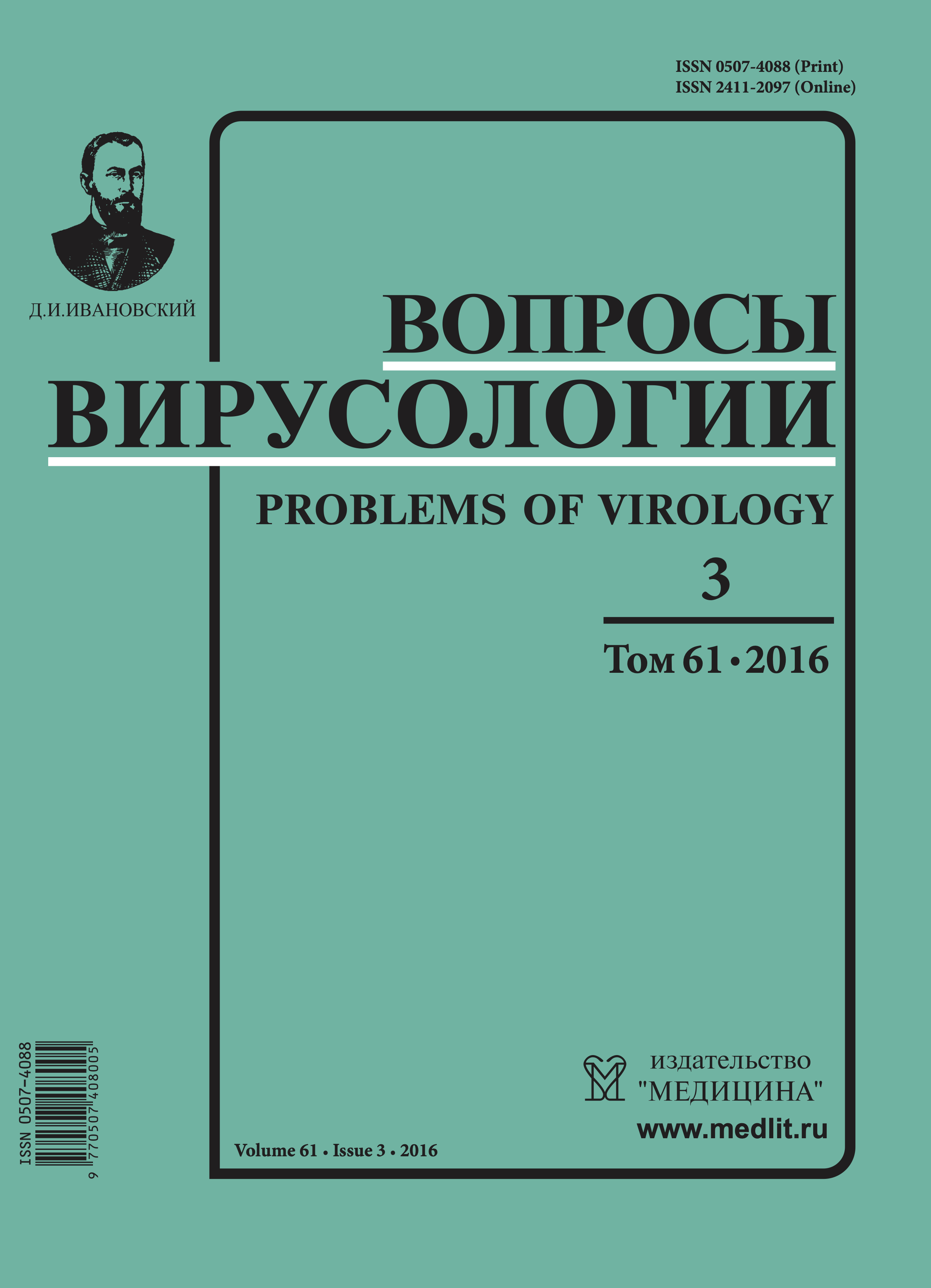Том 61, № 3 (2016)
- Год: 2016
- Выпуск опубликован: 28.06.2016
- Статей: 8
- URL: https://virusjour.crie.ru/jour/issue/view/42
Весь выпуск
ОБЗОРЫ
Природные резервуары вирусов рода Hepacivirus семейства Flaviviridae
Аннотация
 101-106
101-106


Эмбриональные стволовые клетки мыши – перспективный материал для изучения вируса инфекционной анемии лошадей in vitro и in vivo
Аннотация
 107-111
107-111


ОРИГИНАЛЬНЫЕ ИССЛЕДОВАНИЯ
Сравнительный анализ генетических вариантов ВИЧ-1, циркулировавших в Иркутской области в 1999 и 2012 гг.
Аннотация
 112-118
112-118


Взаимодействие герпесвирусов со зрелыми сперматозоидами человека в модельной системе in vitro
Аннотация
 119-125
119-125


Влияние комбинации глицирризиновая кислота + альфаглутамил-триптофан на ход экспериментальной аденовирусной инфекции
Аннотация
 125-131
125-131


Вирусные инфекции и ретинобластома у детей
Аннотация
 132-134
132-134


Вакцины на основе дальневосточного и европейского штаммов индуцируют нейтрализующие антитела ко всем известным подтипам вируса клещевого энцефалита
Аннотация
 135-139
135-139


Противовирусная активность препаратов с различным механизмом действия при экспериментальном клещевом энцефалите
Аннотация
Одним из возможных подходов к эффективному, патогенетически обоснованному лечению пациентов с клещевым энцефалитом (КЭ) является включение в комплексную терапию иммунотропных препаратов, выделенных из природных объектов. Проведено сравнительное изучение противовирусной активности тинростима (иммуноактивного пептида из оптических ганглиев кальмара Berryteuthis magister) и некоторых официнальных препаратов, применяемых для профилактики и лечения КЭ (рибавирин, реаферон-ЕС, циклоферон, йодантипирин, иммуноглобулин против КЭ) при экспериментальном КЭ. Все тестируемые препараты достоверно подавляли размножение высоковирулентного штамма вируса КЭ в чувствительной культуре клеток почки эмбриона свиньи: рибавирин и иммуноглобулин против КЭ ингибировали репродукцию вируса полностью – на 100%, циклоферон – на 75%, тинростим, реаферон-ЕС и йодантипирин – на 50–60%. На модели острого летального КЭ у мышей оценивали терапевтическую эффективность препаратов. Применение циклоферона и иммуноглобулина против КЭ предотвращало смертность 35–45% инфицированных животных, тинростима – 25%, рибавирина, реаферона-ЕС и йодантипирина – 5–10% животных. Комбинация иммуноактивного пептида тинростима с официнальными препаратами (рибавирином, циклофероном) была более эффективна, чем применение отдельных препаратов, что свидетельствует о перспективности использования такой терапии при КЭ.
 139-144
139-144











